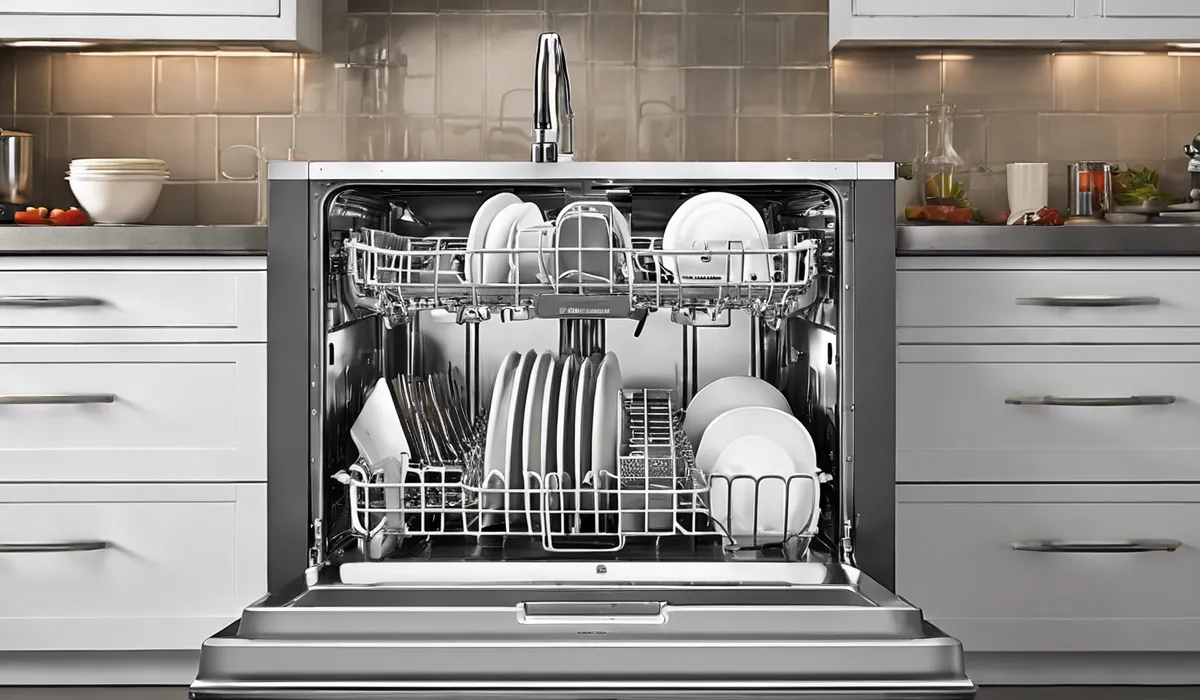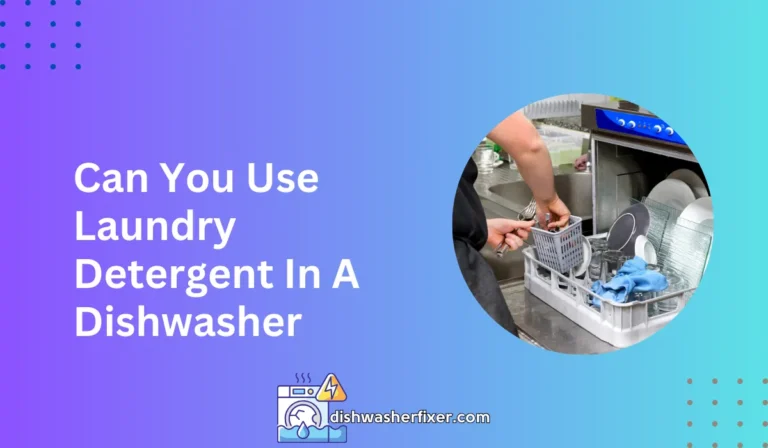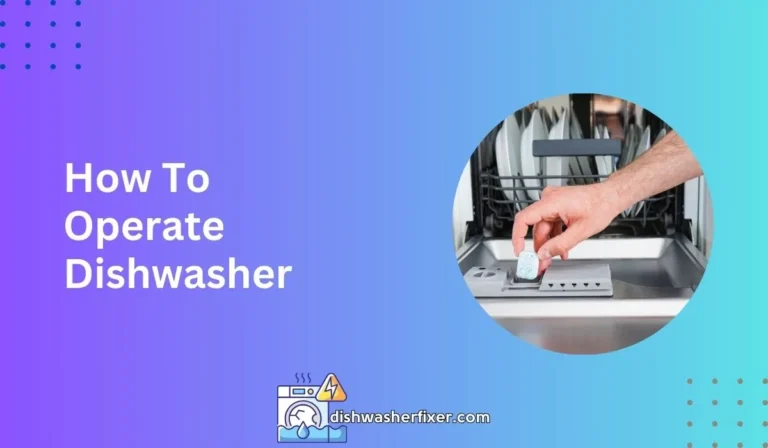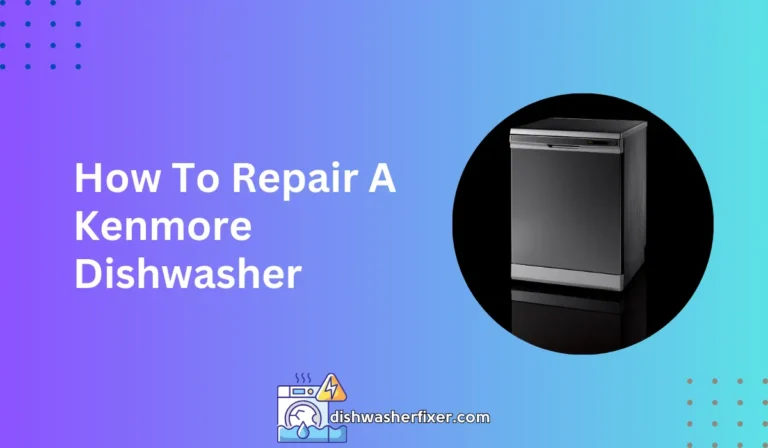What is the Most Common Problem with a KitchenAid Dishwasher?
The most common problem with a KitchenAid dishwasher is typically related to drainage issues. Users often report that the dishwasher does not drain properly, leaving water at the bottom of the unit after a cycle. Blocked filters or a faulty drain pump can cause these symptoms.
Common Mechanical Issues in KitchenAid Dishwashers

Pump and Motor Assembly Problems
One of the pivotal components of a KitchenAid dishwasher is its pump and motor assembly. This duo is responsible for circulating water and ensuring dishes come out clean.
However, a malfunction in this assembly can lead to unclean dishes or the dishwasher not starting at all.
Signs of pump and motor assembly issues include unusual noises during a wash cycle or water not being pumped out effectively. It’s important to address these problems promptly to prevent further damage to your appliance.
Faulty Water Inlet Valve
The water inlet valve controls the flow of water into your dishwasher. A faulty valve can lead to water not entering the dishwasher, resulting in dishes not being washed.
Conversely, if the valve doesn’t close properly, it can cause leaks and potential water damage to your home. Regularly checking for signs of water leakage and ensuring the valve operates correctly can save you from unexpected repairs.
Malfunctioning Heating Element
A properly working heating element is essential for drying dishes and enhancing the cleaning process. If you find your dishes are wet or not as clean after a cycle, the heating element might be to blame.
A continuity test with a multimeter can determine if the element needs replacing. Keeping an eye on the performance of the heating element ensures you won’t be left with wet dishes.
Worn-out Wash Arm Assemblies
Wash arms are crucial for spraying water and detergent onto the dishes. Over time, these can become worn out or clogged, leading to poor cleaning results.
Inspecting and cleaning the wash arms regularly can prevent this issue, ensuring that your dishwasher continues to perform at its best.
Replacing any damaged wash arms is a straightforward process that can dramatically improve the effectiveness of your dishwasher.
Door Latch Failures
The door latch keeps the dishwasher sealed during operation. A failing latch may prevent the dishwasher from starting, as most models have a safety feature that prevents operation if the door is not secured.
Regular use can wear out the latch over time, so keeping an eye on its condition and replacing it when necessary will ensure that your dishwasher remains functional and safe to use.
Electrical Problems in KitchenAid Dishwashers

Control Panel and Touchpad Malfunctions
As the main interface for your dishwasher, the control panel and touchpad are vital for selecting wash cycles and starting the machine.
Malfunctions can arise from spills or wear and tear, leading to unresponsive or erratic behavior.
Regular cleaning and careful use can prevent some issues, but if problems persist, contacting a professional technician.
Problems with the Electronic Control Board
The electronic control board is the brain of the dishwasher, coordinating all its functions. Issues here can lead to a variety of symptoms, from cycles not starting to the dishwasher not responding at all.
It’s often challenging to diagnose control board problems without professional help, but keeping your dishwasher clean and protected from power surges can extend the lifespan of this critical component.
Issues with the Thermal Fuse
The thermal fuse is a safety device that prevents the dishwasher from overheating. If your dishwasher suddenly stops working, a blown thermal fuse might be the culprit.
Replacing a thermal fuse is a relatively easy and cost-effective solution that can be done with basic tools.
However, if the fuse blows frequently, it may indicate a more serious problem that needs professional attention.
Wiring and Power Supply Concerns
Proper electrical wiring and a stable power supply are essential for the dishwasher’s operation.
Over time, wires can become loose or damaged, leading to intermittent power or total failure.
Regular inspections can help identify potential hazards early. If you are not comfortable working with electricity, it is always best to consult a professional to address these issues safely.
User-Related Issues and Maintenance Neglect

Overloading of Dishes
It might be tempting to fit as many dishes as possible into a single load, but overloading your dishwasher can lead to poor cleaning results and potentially damage the appliance.
Make sure to load the dishwasher according to the manufacturer’s recommendations. This ensures that water and detergent can reach all surfaces, and it helps prevent strain on the racks and spray arms.
Incorrect Detergent Usage
Using the right detergent and the correct amount is crucial for getting your dishes clean without damaging your dishwasher. Too much detergent can cause excess suds and leave a residue, while too little may not clean effectively.
Always follow the detergent manufacturer’s instructions and consider using detergents specifically designed for hard water if you experience mineral buildup.
Inadequate Cleaning and Maintenance
Regular cleaning and maintenance are key to the longevity of your KitchenAid dishwasher. Neglecting to clean filters, traps, and spray arms can lead to clogs and reduced cleaning efficiency.
Schedule periodic deep cleans and inspections to keep your dishwasher running smoothly, and refer to your user manual for specific maintenance tips for your model.
Misalignment and Blockages in Spray Arm Jets
The spray arms are critical for distributing water during a wash cycle, and blockages in these jets can prevent your dishes from getting clean.
Regularly inspect the spray arms for debris and ensure they are correctly aligned for optimal performance. Clearing any blockages and realigning the spray arms can significantly improve the dishwasher’s effectiveness.
Hard Water Buildup and Lime Scale
Hard water can leave deposits on your dishes and the interior of your dishwasher, which can diminish cleaning performance over time. Using rinse aids and water softeners can help prevent lime scale buildup.
If you notice a white residue on your dishes or dishwasher, consider using a product designed to remove hard water deposits. Regularly descaling your dishwasher can maintain its efficiency and extend its life.
FAQs About Common Problems with KitchenAid Dishwashers
What is the most common problem with a KitchenAid dishwasher?
The most common problem with a KitchenAid dishwasher is related to drainage issues, where it does not drain properly, leaving water at the bottom after a cycle.
Why does my KitchenAid dishwasher not drain properly?
Your KitchenAid dishwasher may not be draining properly due to blocked filters or a faulty drain pump.
How can I identify if my KitchenAid dishwasher filter is blocked?
You can identify a blocked filter in your KitchenAid dishwasher by checking for visible debris and reduced water flow in the filter area.
What should I do if my KitchenAid dishwasher has a faulty drain pump?
If your KitchenAid dishwasher has a faulty drain pump, you should consult the user manual or contact a professional technician for repair or replacement.
Can I prevent drainage issues in my KitchenAid dishwasher?
Yes, regular maintenance such as cleaning the filters and ensuring the drain hose is not kinked can help prevent drainage issues in your KitchenAid dishwasher.
Final Thoughts
The prevalent issue with KitchenAid dishwashers centers on drainage complications. Users frequently encounter water remaining in the appliance post-cycle, indicating it hasn’t drained properly.
This is often due to clogs in the filters or malfunctions within the drain pump, hindering the dishwasher’s ability to effectively remove water.





